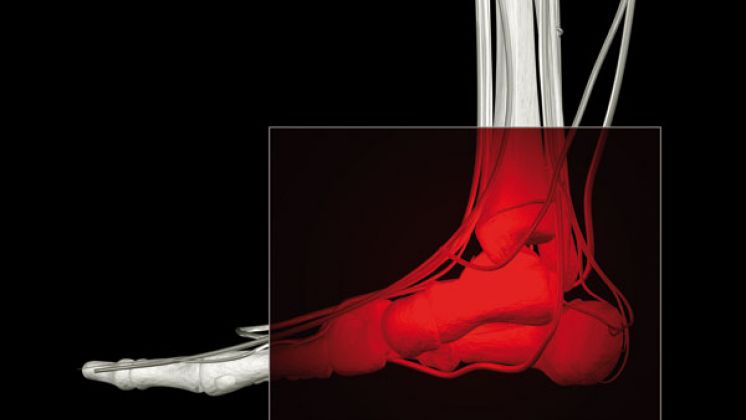Fix lower body injuries
If you do get injured, this guide will ease you back to fitness

Plantar fasciitis
The tough band of tissue that runs along the underside of your foot from your heel to your toes is vulnerable to being overstretched and pulled away from its anchor on the heel, causing pain.
The culprit: Over-pronation (feet that roll inwards after the heel strike) can flatten the arch at push-off during a run, which can tear the plantar fascia. Tight calf muscles and over-enthusiastic hill climbing can also do this.
The fix: Take a break from whatever exercise caused it, then gently ease your way back in with stretches before moving on to low-impact training. Buying a pair of shoes with cushioned heels and better arch support will also help.
Runner’s knee
More correctly known as patellofemoral pain syndrome, runner’s knee is caused by a misfiring joint that isn’t compressing its cartilage properly. This degrades the cartilage and causes pain on the inside of and below the kneecap.
The culprit: Over-pronation, weak quads and tight hamstrings or calves all contribute to this overuse injury.
The fix: Run less, avoid running downhill and improve your lower-body flexibility by stretching. Get your running gait analysed to make sure you’re not over-pronating.
Tibial stress fracture
This is a tiny fracture in the shinbone, which builds from irritation to agony during a run.
Get the Coach Newsletter
Sign up for workout ideas, training advice, reviews of the latest gear and more.
The culprit: Overtraining may be the cause but gait problems, training too hard too soon and tight calves and hamstrings can all trigger a stress fracture.
The fix: Rest is vital, particularly from high-impact exercise. Switch to a low-impact sport such as cycling or swimming once the pain subsides and work on your hamstring and calf flexibility.
Achilles tendonitis
The body’s largest and strongest tendon can rupture dramatically but it can also suffer from inflammation, leading to pain during or after exercise.
The culprit: This classic overuse injury can be caused by long periods of over-pronation. Other causes include increasing your mileage suddenly and doing too many hill-running and speed sessions.
The fix: RICE and patience. This tendon has low blood flow and takes a long time to heal. Ignoring the pain can make the injury chronic and increase the risk of a rupture.
RICE
Limit an injury’s severity and reduce your recovery time by following this procedure. Taking anti-inflammatory medication, such as ibuprofen, will help too
Rest the injured area by keeping your weight off it for 48 hours.
Ice packs should be applied for 20 minutes at a time for as long as the swelling persists. Never apply ice directly to the skin.
Compress the ankle, foot or knee with firmly wrapped elastic bandage, gel wrap or a compression stocking.
Elevate the injured body part above the level of the heart as often as possible for 48 hours to minimise bruising and swelling.
Coach is a health and fitness title. This byline is used for posting sponsored content, book extracts and the like. It is also used as a placeholder for articles published a long time ago when the original author is unclear. You can find out more about this publication and find the contact details of the editorial team on the About Us page.

